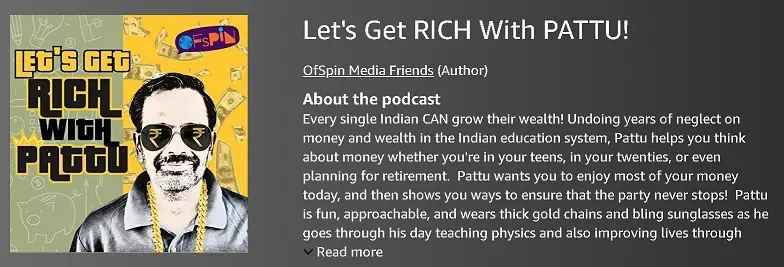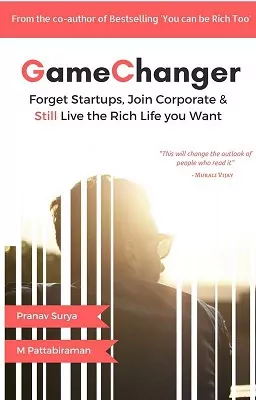Last Updated on August 24, 2019 at 9:13 am
The Mutual Fund space in India is reasonably large and growing. There are almost 50 Asset Management Companies (AMCs) offering more than 1,000 – and counting – schemes. The choice can be overwhelming at times. There are literally thousands of places that list the ‘best funds’ to invest in. This short post approaches the issue from the opposite side – the entire set of funds that you can simply ignore.
This a guest post by S R Srinivasan, SEBI registered fee-only investment advisor. Financially independent, he believes in numbers based insights. You can approach him for your financial needs via srinivesh.in
Mutual Fund Categories – Introduction
Starting late 2017, SEBI has introduced a standard categorization of mutual fund schemes. At the highest level, there are 5 categories:
- Equity Schemes
- Debt Schemes
- Hybrid Schemes
- Solution-Oriented Schemes
- Other Schemes (FoF, ETFs, Index funds, etc.)
These are further divided into sub-categories. In this post, we use the word ‘Category’ loosely to mainly refer to the sub-category.
Join 32,000+ readers and get free money management solutions delivered to your inbox! Subscribe to get posts via email! (Link takes you to our email sign-up form)
🔥Want to create a complete financial plan? Learn goal-based investing? Exclusive access to our DIY tools? Increase your income with your skills? Use this link to enjoy massive discounts on our robo-advisory tool & courses! 🔥
Notes: 1. There is no easy way to know the category of a mutual fund scheme. The AMC would, of course, have the right information and should be used as the authoritative source. Many of the mutual fund tools like ValueResearch, Morningstar, etc. use their grouping. It is mostly correct but can be wrong sometimes. e.g VRO groups Index funds along with Large Cap funds, HDFC Children Gift fund as Hybrid Aggressive, etc.
2. Many of the avoidable categories have been voted so by the market itself – they have much fewer schemes. However, there are some very popular categories that are avoidable too.
Solution-Oriented Schemes – An entire category to avoid
There are two sub-categories here – both have a 5-year lock-in in most cases.
- Retirement Fund – Scheme having a lock-in for at least 5 years or till retirement age whichever is earlier
- Children’s Fund – Scheme having a lock-in for at least 5 years or till the child attains the age of majority whichever is earlier
The names can tug at your emotional strings. But there is nothing that these funds do that many other categories of funds can’t do. Why lock into a fund with no perceived benefit? Plus the multiple NAV options in Retirement Funds are a nightmare to choose from.
Hybrid Funds to Avoid
Balanced Hybrid Fund
SEBI defines them this way: Equity & Equity related instruments- between 40% and 60% of total assets; Debt instruments- between 40% and 60% of total assets;
No Arbitrage would be permitted in this scheme
These funds are neither here nor there. A 20% differential is something an investor can manage herself. Unsurprisingly there are only a handful of schemes in this category.
Equity Savings Fund
These have been aptly called Chinese Dosa! There are some folks who like such things. But for most, these funds are more complex than necessary. They invest in a combination of equity, arbitrage and debt. Most Arbitrage funds do this too, and without taking up open equity positions. The typical returns are only slightly higher than Arbitrage funds and Debt funds, but the Standard Deviation is higher, much higher.
A similar risk-return argument can be made for the Multi-Asset Allocation category too.
Debt Funds to Avoid
Medium Duration and above
There are in fact three categories here. The first two are:
Medium Duration Fund – Investment in Debt & Money Market instruments such that the Macaulay duration of the portfolio is between 3 years – 4 years
Medium to Long Duration Fund – Investment in Debt & Money Market instruments such that the Macaulay duration of the portfolio is between 4 – 7 years
These durations are difficult to manage. SEBI even provides an escape clause of ‘adverse situations’. The funds can reduce the duration to as low as 1 year. In effect, these can act like dynamic bond funds, but with more constraints. Almost all retail investors can avoid this category, though there are almost 20 schemes in each category.
There is also the Long Duration category – Maculay duration should be 7 years or above. The industry itself has voted on this – there are only 3 schemes as of now.
Corporate Bond Fund
This can be a puzzling inclusion in the list of avoidable categories. These funds have to invest at least 80% in corporate bonds that are rated AA+ and above. If you believe the rating, then you can consider them low on credit risk. The duration can be variable and this provides some uncertainty. An interesting aspect comes from diversification. There are many companies in India whose debt instruments have high ratings. However, most of them belong to a few dozen corporate groups. High concentration should be avoided in debt funds. If you do choose a fund from this category, please ensure that the fund is well diversified.
Banking and PSU Fund
The traditional view is that these funds are reasonably safe as they hold papers of PSUs and Banks. SEBI defines this category thus: Minimum 80% of assets should be Debt instruments of banks, Public Sector Undertakings, Public Financial Institutions and Municipal Bonds The list is broad and can include many low-grade papers. A fund manager chasing Alpha can be tempted to take on lower quality paper. And the Government may not rescue you if things go sour – particularly if the institution is not too big to fail. If you like a fund in this category, please go ahead. But don’t have illusions that it is ‘Safe’.
Equity Funds to Avoid
Contra Fund
Per SEBI, the scheme should follow a contrarian investment strategy. Specific Contra funds have been very popular in the past, but they have found it difficult to maintain that record. SEBI made this category mutually exclusive with the Value category – an AMC can have either a Contra fund or a Value fund. There are only 3 funds in this category.
Dividend Yield Fund
Per SEBI, a scheme in this category should predominantly invest in dividend-yielding stocks. Since Indian equity investors almost demand regular dividends from their holdings, most large cap and mid cap companies declare dividends. There is very little value that a Dividend Yield fund adds over, say, a Large and Midcap fund. And in any case, dividends received by mutual funds are not passed through – they just increase the NAV. There is then little benefit from this category.
Sectoral/Thematic Funds
Some sectors – Infrastructure, Banking, and some themes – Consumption, Opportunities, have been popular with investors. These funds are definitely more volatile than broad-based equity funds. There have been many comparisons made on the sectoral composition of, say, Nifty 50 over the years. About 10 years ago, the Energy sector had 40+ weight in the index and FSI had a weight just above 10. The situation is almost reversed ten years later – FSI has a weight of almost 40 and Energy around 15. And it is not unidirectional either. The weight for IT had grown over the years and fallen. So unless you are very confident about your selection, you can give these funds a miss.
Small Cap Fund
There are some good funds in this category. But overall, the category suffers from many of the ills of Indian equity – all the way from poor management quality to poor governance. In my view, the structural issues in this space would take a long time to be resolved. If you want the thrills high volatility stocks, mid-cap funds offer a much better balance of risk and returns.
And finally, Large Cap Fund
This would raise eyebrows. It has been traditional wisdom to say that large cap funds should be the core of one’s portfolio. There are two reasons that make large cap funds less suitable:
- The tight mandate by SEBI – At least 80% of the assets should be in large cap. This reduces the space for stocks of smaller companies and hence reduces the scope for Alpha. In the past, the funds had a liberal dose of mid-cap and smaller companies to provide a kicker to the performance.
- The growing number, and reducing cost, of index funds and ETFs tracking Nifty 50, Nifty Next 50, Sensex, etc. These provide a lower-cost alternative to active funds
Combined together, these factors keep reducing the advantage of actively managed funds in this space. Investors may find index funds more suitable. To add further spice, there are a few ETFs tracking strategic indices built on large cap stocks.
Conclusion
The list of categories above would exclude more than 25% of the schemes that are in the market now. This should hopefully help you in your selection. If you want a shortlist of funds that you should consider, please look at the Plumbline. The link is featured in the top bar of the site.
Related Articles
- https://freefincal.com/sebi-categorization-and-rationalization-of-mutual-fund-schemes/
- https://freefincal.com/equity-savings-funds/
- https://freefincal.com/macaulay-duration-debt-mutual-funds/
- https://freefincal.com/how-to-select-suitable-debt-mutual-funds-with-low-credit-risk/
- https://freefincal.com/banking-psu-debt-funds-credit-risk/
- https://freefincal.com/large-cap-vs-mid-cap-vs-small-cap/
- https://freefincal.com/only-five-large-cap-funds-have-comfortably-beat-nifty-100/
- https://freefincal.com/should-i-now-switch-from-large-cap-funds-to-index-funds/

Use our Robo-advisory Tool to create a complete financial plan! ⇐More than 3,000 investors and advisors use this! Use the discount code: robo25 for a 20% discount. Plan your retirement (early, normal, before, and after), as well as non-recurring financial goals (such as child education) and recurring financial goals (like holidays and appliance purchases). The tool would help anyone aged 18 to 80 plan for their retirement, as well as six other non-recurring financial goals and four recurring financial goals, with a detailed cash flow summary.
🔥You can also avail massive discounts on our courses and the freefincal investor circle! 🔥& join our community of 8000+ users!
Track your mutual funds and stock investments with this Google Sheet!
We also publish monthly equity mutual funds, debt and hybrid mutual funds, index funds, and ETF screeners, as well as momentum and low-volatility stock screeners.
You can follow our articles on Google News

We have over 1,000 videos on YouTube!

Join our WhatsApp Channel



- Do you have a comment about the above article? Reach out to us on Twitter: @freefincal or @pattufreefincal
- Have a question? Subscribe to our newsletter using the form below.
- Hit 'reply' to any email from us! We do not offer personalised investment advice. We can write a detailed article without mentioning your name if you have a generic question.
Join 32,000+ readers and get free money management solutions delivered to your inbox! Subscribe to get posts via email! (Link takes you to our email sign-up form)
About The Author
 Dr M. Pattabiraman (PhD) is the founder, managing editor and primary author of freefincal. He is an associate professor at the Indian Institute of Technology, Madras. He has over 13 years of experience publishing news analysis, research and financial product development. Connect with him via Twitter(X), LinkedIn, or YouTube. Pattabiraman has co-authored three print books: (1) You can be rich too with goal-based investing (CNBC TV18) for DIY investors. (2) Gamechanger for young earners. (3) Chinchu Gets a Superpower! for kids. He has also written seven other free e-books on various money management topics. He is a patron and co-founder of “Fee-only India,” an organisation promoting unbiased, commission-free, AUM-independent investment advice.
Dr M. Pattabiraman (PhD) is the founder, managing editor and primary author of freefincal. He is an associate professor at the Indian Institute of Technology, Madras. He has over 13 years of experience publishing news analysis, research and financial product development. Connect with him via Twitter(X), LinkedIn, or YouTube. Pattabiraman has co-authored three print books: (1) You can be rich too with goal-based investing (CNBC TV18) for DIY investors. (2) Gamechanger for young earners. (3) Chinchu Gets a Superpower! for kids. He has also written seven other free e-books on various money management topics. He is a patron and co-founder of “Fee-only India,” an organisation promoting unbiased, commission-free, AUM-independent investment advice.Our flagship course! Learn to manage your portfolio like a pro to achieve your goals regardless of market conditions! ⇐ More than 3,500 investors and advisors are part of our exclusive community! Get clarity on how to plan for your goals and achieve the necessary corpus no matter the market condition!! Watch the first lecture for free! One-time payment! No recurring fees! Life-long access to videos! Reduce fear, uncertainty and doubt while investing! Learn how to plan for your goals before and after retirement with confidence.
Increase your income by getting people to pay for your skills! ⇐ More than 800 salaried employees, entrepreneurs and financial advisors are part of our exclusive community! Learn how to get people to pay for your skills! Whether you are a professional or small business owner seeking more clients through online visibility, or a salaried individual looking for a side income or passive income, we will show you how to achieve this by showcasing your skills and building a community that trusts and pays you. (watch 1st lecture for free). One-time payment! No recurring fees! Life-long access to videos!
Our book for kids: “Chinchu Gets a Superpower!” is now available!


Must-read book even for adults! This is something that every parent should teach their kids right from their young age. The importance of money management and decision making based on their wants and needs. Very nicely written in simple terms. - Arun.Buy the book: Chinchu gets a superpower for your child!
How to profit from content writing: Our new ebook is for those interested in getting a side income via content writing. It is available at a 50% discount for Rs. 500 only!
Do you want to check if the market is overvalued or undervalued? Use our market valuation tool (it will work with any index!), or get the Tactical Buy/Sell timing tool!
We publish monthly mutual fund screeners and momentum, low-volatility stock screeners.
About freefincal & its content policy. Freefincal is a News Media organisation dedicated to providing original analysis, reports, reviews and insights on mutual funds, stocks, investing, retirement and personal finance developments. We do so without conflict of interest and bias. Follow us on Google News. Freefincal serves more than three million readers a year (5 million page views) with articles based only on factual information and detailed analysis by its authors. All statements made will be verified with credible and knowledgeable sources before publication. Freefincal does not publish paid articles, promotions, PR, satire or opinions without data. All opinions will be inferences backed by verifiable, reproducible evidence/data. Contact Information: To get in touch, please use our contact form. (Sponsored posts or paid collaborations will not be entertained.)
Connect with us on social media
- Twitter @freefincal
- Subscribe to our YouTube Videos
- Posts feed via Feedburner.
Our publications
You Can Be Rich Too with Goal-Based Investing
 Published by CNBC TV18, this book is designed to help you ask the right questions and find the correct answers. Additionally, it comes with nine online calculators, allowing you to create custom solutions tailored to your lifestyle. Get it now.
Published by CNBC TV18, this book is designed to help you ask the right questions and find the correct answers. Additionally, it comes with nine online calculators, allowing you to create custom solutions tailored to your lifestyle. Get it now.Gamechanger: Forget Startups, Join Corporate & Still Live the Rich Life You Want
 This book is designed for young earners to get their basics right from the start! It will also help you travel to exotic places at a low cost! Get it or gift it to a young earner.
This book is designed for young earners to get their basics right from the start! It will also help you travel to exotic places at a low cost! Get it or gift it to a young earner.Your Ultimate Guide to Travel
 This is an in-depth exploration of vacation planning, including finding affordable flights, budget accommodations, and practical travel tips. It also examines the benefits of travelling slowly, both financially and psychologically, with links to relevant web pages and guidance at every step. Get the PDF for Rs 300 (instant download)
This is an in-depth exploration of vacation planning, including finding affordable flights, budget accommodations, and practical travel tips. It also examines the benefits of travelling slowly, both financially and psychologically, with links to relevant web pages and guidance at every step. Get the PDF for Rs 300 (instant download)